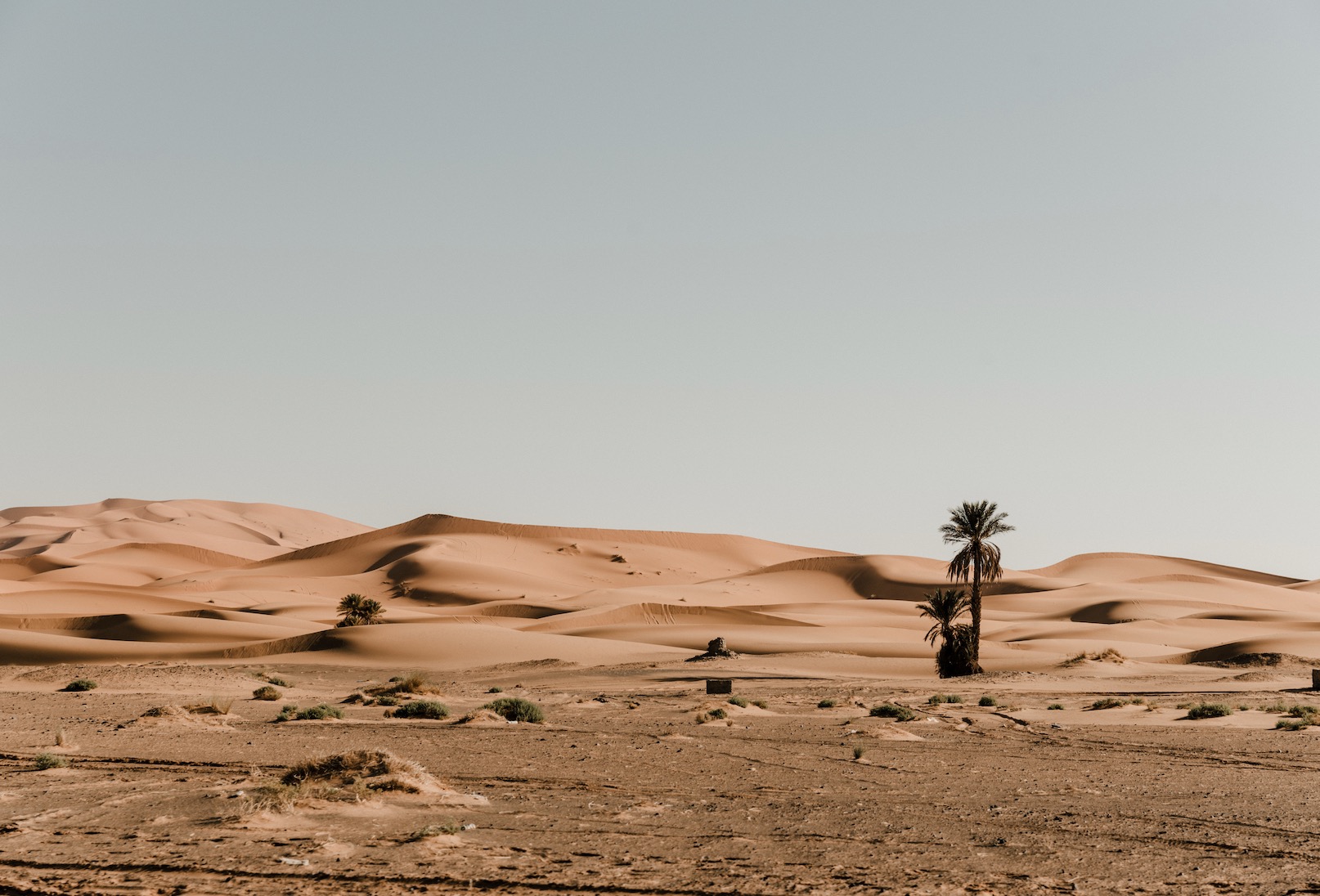Easy Ways to Calculate Magnetic Declination: Magnetic declination, also known as magnetic variation, is the angle between magnetic north (the direction the north end...
What Are the 6 Effects of Desertification?
The six effects of desertification are:
- Loss of Biodiversity: Desertification leads to the degradation of habitats, resulting in a decline in plant and animal species.
- Reduced Agricultural Productivity: Soil degradation and loss of arable land drastically reduce the ability to grow crops, affecting food supply and farmer livelihoods.
- Water Scarcity: As vegetation diminishes, there’s less moisture released into the atmosphere, leading to reduced rainfall and depleted water resources.
- Increased Soil Erosion: Without plant roots to hold the soil in place, it becomes more susceptible to erosion by wind and water.
- Climate Change Impacts: Reduced vegetation cover leads to less carbon dioxide absorption, exacerbating global warming. Additionally, altered landscapes can change local climate patterns.
- Socioeconomic Consequences: Economic hardships increase as agricultural productivity falls and water scarcity worsens, leading to poverty, migration, and sometimes conflict as communities compete for dwindling resources.
What Are the 6 Effects of Desertification?
Desertification is a significant environmental issue that affects various regions around the globe, particularly arid and semi-arid areas. It refers to the process by which fertile land becomes desert, typically as a result of drought, deforestation, or inappropriate agriculture. The effects of desertification are profound and far-reaching, impacting not only the environment but also the societies and economies that depend on the land. Here are six major effects of desertification:
1. Loss of Biodiversity
Desertification leads to a stark reduction in habitat variety, causing a decline in both plant and animal species. As the vegetation cover is lost, the land becomes less hospitable to the native wildlife, leading to a loss in biodiversity. This decline in biodiversity can disrupt ecosystems, eliminating food sources and other resources necessary for wildlife and human survival.
In the Sahel region of Africa, desertification has led to a significant loss of native vegetation and wildlife species. The once lush and diverse ecosystems are now becoming barren deserts, with species such as the African wild dog and the Baobab tree suffering from loss of habitat. This biodiversity loss is not only a biological crisis but also diminishes the ecological resilience of the area.
2. Reduced Agricultural Productivity
The fertility of the soil diminishes as it becomes more arid and loses its nutrients. This loss of soil fertility can significantly decrease agricultural productivity, making it difficult to grow crops. In regions that depend heavily on agriculture for food and economic stability, reduced yields can lead to food shortages and increase the vulnerability of these communities to food insecurity.
In northern China, the expansion of the Gobi Desert is a striking example of reduced agricultural productivity due to desertification. Once fertile lands are now unable to support traditional farming, leading to a decline in local food production and increased reliance on food imports. Evidence shows that grain yields in some affected areas have decreased by over 40% in the past few decades.
3. Water Scarcity
As the land dries up, the availability of water sources also declines. Desertification can lead to the degradation of water quality and the reduction of water in underground aquifers. This scarcity affects not only the ability to irrigate crops but also the supply of drinking water for humans and animals, further exacerbating the challenges in these environments.
The Aral Sea in Central Asia experienced drastic reductions in water volume, partially due to the diversion of rivers for irrigation, which is a practice that can contribute to desertification. This has resulted in a severe scarcity of water resources in the region, compounding the stress on agricultural and human needs. The remaining water is often too polluted or saline for use, exacerbating the local water crisis.
4. Increased Soil Erosion
Without vegetation to hold the soil in place, it becomes highly susceptible to erosion. Wind and water can easily remove the top layer of soil, a process that is accelerated in arid conditions. This erosion can lead to further degradation of the land and make it even more challenging to restore its productivity.
In the Amazon basin, where deforestation has led to exposed soil, the rainy season now results in significant soil erosion. The loss of forest cover has left the soil vulnerable to being washed away during heavy rains, which strips the land of nutrients necessary for regrowth of vegetation, creating a vicious cycle of degradation.
5. Climate Change Impacts
Desertification also contributes to climate change. Vegetation plays a critical role in the carbon cycle by absorbing carbon dioxide from the atmosphere. With less vegetation, there’s less carbon absorption, increasing the concentration of greenhouse gases in the atmosphere. Additionally, the transformation of land from forest or pasture to desert can alter local weather patterns, contributing to longer and more severe droughts.
The Lake Chad Basin has seen a reduction in size by approximately 90% over the past few decades, partly due to climate change exacerbated by local land mismanagement and desertification. This reduction has altered local climate conditions, with the area experiencing higher temperatures and less rainfall, further discouraging plant growth and contributing to the ongoing desertification.
6. Socioeconomic Consequences
The effects of desertification extend beyond the environmental impacts. Economically, communities suffer as farming and grazing land deteriorates, leading to loss of livelihoods for many people. Socially, it can cause migrations and displacements as people leave their homes in search of better conditions, potentially leading to conflicts and increased pressure on urban areas.
In Mongolia, desertification has forced many traditional herders to abandon their livelihoods as grazing lands disappear. This has led to a significant rural to urban migration, particularly to the capital, Ulaanbaatar. The sudden increase in urban population is straining the city’s infrastructure and has led to the rise of “ger districts” – sprawling settlements that lack basic services such as sanitation and water supply.
Conclusion
Desertification poses a critical challenge to sustainable development, particularly in vulnerable regions. Combating this phenomenon requires integrated approaches that involve sustainable land management, reforestation efforts, and policies that address the underlying causes such as overgrazing, deforestation, and unsuitable agricultural practices. Addressing desertification is crucial not only for the health of our environment but for the wellbeing of millions of people worldwide.







